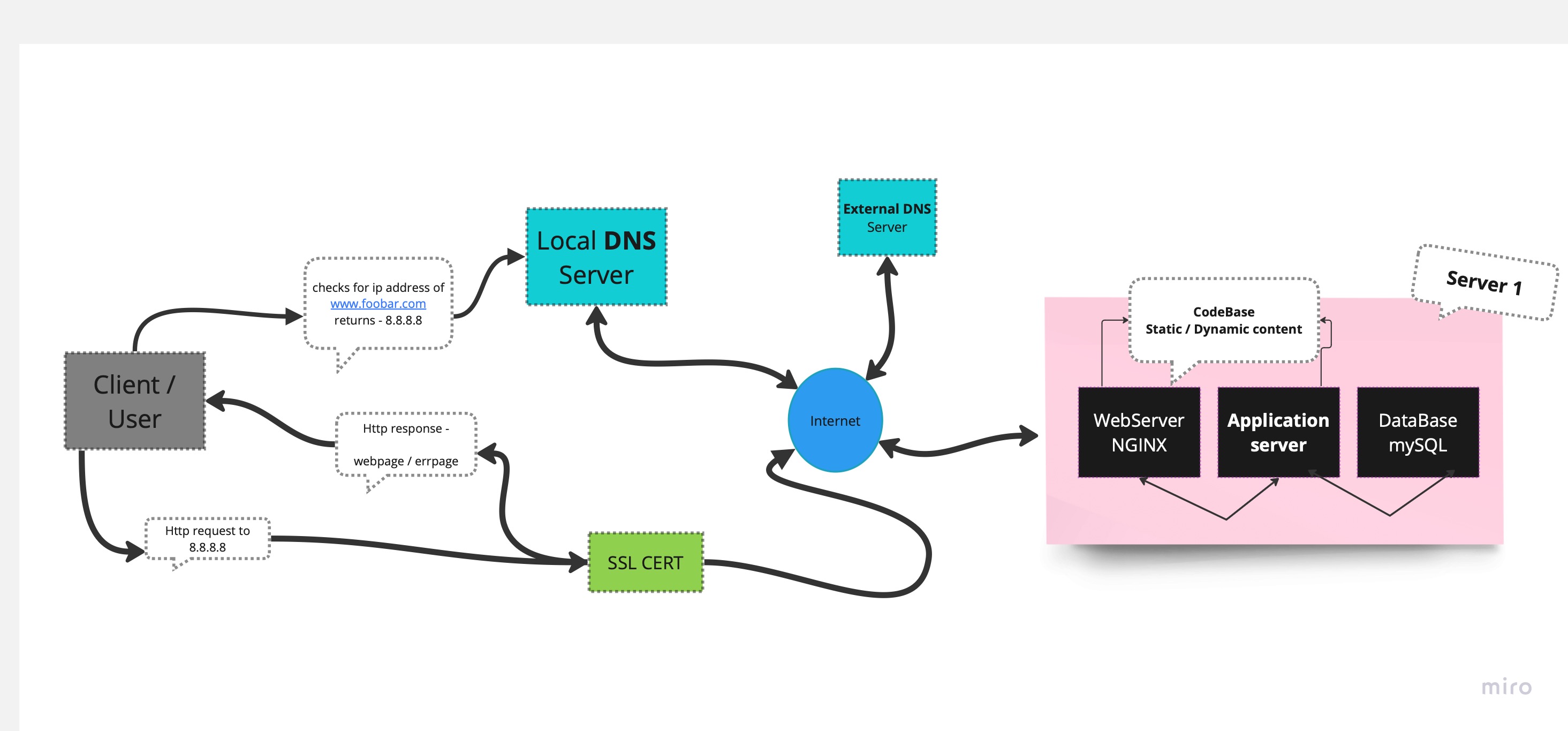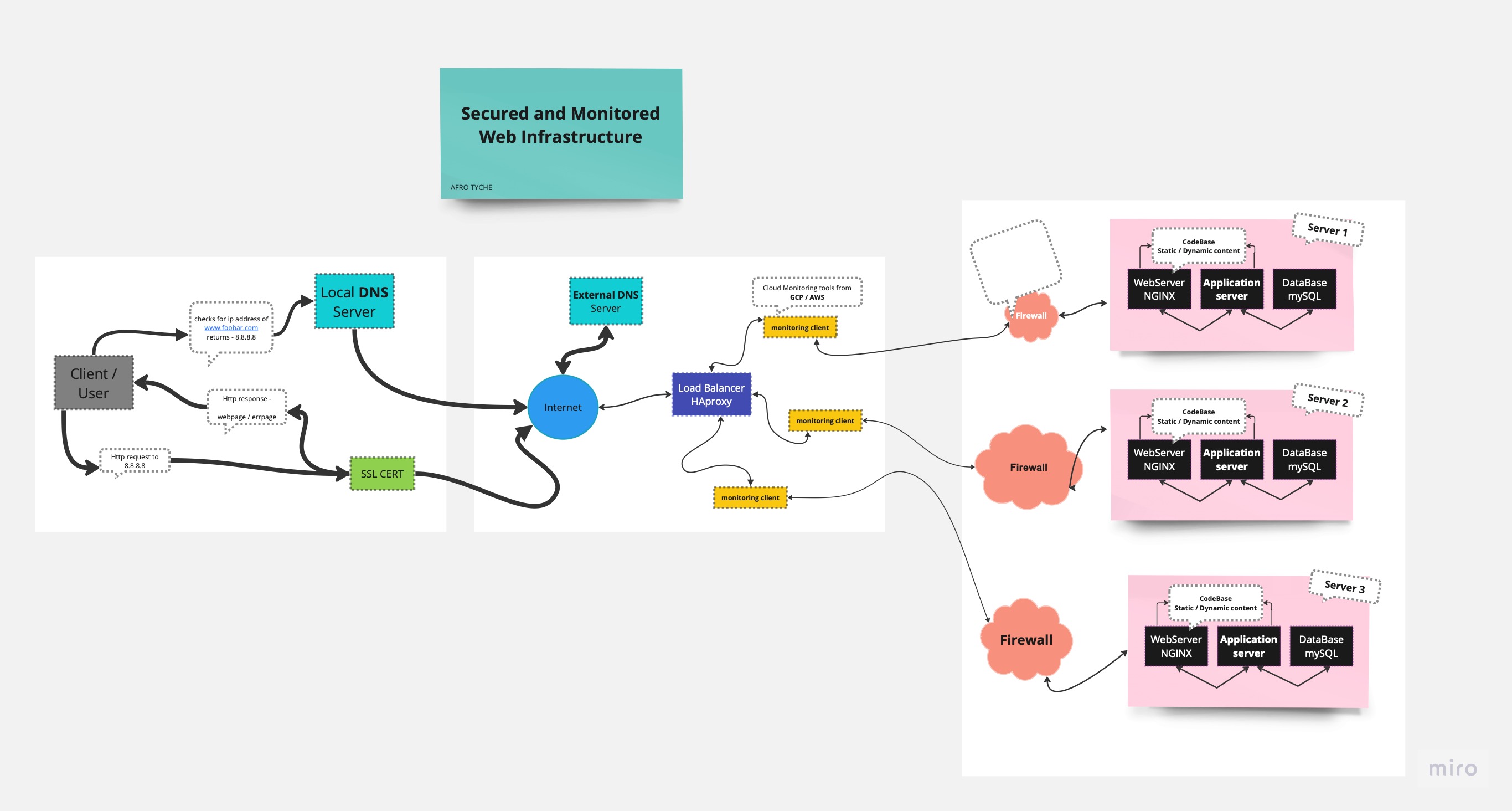Understanding Web Application Infrastructure- the fundamentals
 Emmanuel Ugbaje
Emmanuel Ugbaje
In the realm of web application hosting, a robust and well-organized infrastructure is the key to success. Today, we'll delve into the fascinating world of web infrastructure, exploring the intricate components that make it all happen. So, grab your favorite drink, get comfy, and let's embark on this journey.
Defining Web Application Infrastructure
Web Application Infrastructure, also known as Internet Infrastructure, encompasses the physical hardware, transmission media, and software that interconnect computers and users on the Internet. It's the unseen backbone that keeps the digital world connected.

The Simple Web Stack
Imagine this as the foundation for web development. At its core, it includes an operating system (OS), a programming language, database software, and a web server. LAMP (Linux, Apache, MySQL, PHP) is a classic example of a simple web stack, offering a well-rounded toolkit for web development.
The User's Journey
Now, let's walk in the user's shoes. When you type a URL and hit enter, your browser sends out an HTTP request to a server. The web server processes this request and responds with HTML content. It all happens in a matter of seconds.

Meet the Key Players
In our web infrastructure, we encounter several key players, each with a unique role:
1. The Server
Imagine your server as the rock-solid foundation of a skyscraper. It's the place where your applications find their home. It's the hardware and software that provides functionality for other programs or devices. We're giving it a dedicated space to do its thing. Why? Well, it keeps things secure and well-organized.
2. Domain Name
The domain name is your website's address, like an easy-to-remember nickname for a physical IP address. It simplifies the process of accessing websites for users, eliminating the need to remember lengthy IP addresses.
3. DNS (Domain Name System)
The DNS is like the Internet's telephone book. It converts user-friendly domain names into IP addresses. For example, when you want to visit "www.," the DNS translates it into the actual IP address of the web server. It's a behind-the-scenes hero.
4. Web Server
Your web server is your friendly neighbourhood delivery guy. It's there to serve up static content and handle all those HTTP requests. Why? Because we want to keep the heavy lifting away from our other servers. It's an expert in providing quick responses to your browser. Let the web server do what it's good at – delivering stuff.
5. Application Server
Now, let's talk about the star of the show – the application server. Think of it as the chef in a bustling restaurant kitchen. It handles all the dynamic stuff, like cooking up personalized meals (or dynamic content) and managing the entire operation. Why? Well, because it's got a knack for handling complexity, and we don't want to overwhelm our web server with too many pots and pans. It serves (pun intended) as the workhorse behind the scenes. It hosts your business logic, ensuring dynamic content and critical operations run smoothly.
6. Database
Last but not least, we have our trusty database. It's like the librarian in the library, keeping all the books (or data) organized and accessible. The database is your data vault. Why? Data needs a safe place to call home, and we want to keep our data secure and easily retrievable. It stores, retrieves, and manages records while giving structure to business information.
Challenges with the Simple Web Stack
The simple web stack has its limitations, and we need to address them:
SPOF (Single Point Of Failure): A single failure in any part of the system can bring the entire operation to a halt. We lack redundancy.
Downtime during Maintenance: Deploying new code or making updates requires restarting the web server. During this time, users can't access the website.
Scalability Concerns: If traffic surges, a single server can't handle the load effectively. We need a solution for scalability.
Enter the Distributed Web Infrastructure
To tackle these challenges, we introduce a more robust infrastructure:

Load Balancer
Imagine this as a traffic cop directing incoming requests. It ensures even distribution of requests across multiple servers, enhancing efficiency, reliability, and availability.
Redundant Servers
Instead of one, we have multiple servers to handle traffic surges. When a user makes a request, the load balancer directs it to an available server.
Active-Active or Active-Passive Setup
In an active-active configuration, multiple servers share the workload efficiently. In an active-passive setup, a failed node is redirected to the next available one.
The Database Primary-Replica (Master-Slave) Cluster
Master-slave replication is the magic that keeps data synchronized across multiple database servers. The master holds authority, and replicas stay in sync. It's like having a chief storyteller and backup storytellers sharing the same story.
Secured and Monitored Web Infrastructure
To enhance security and monitoring, we bring in SSL certificates, infrastructure monitoring, and firewalls.
SSL Certificate
An SSL certificate initiates secure sessions with users' browsers, ensuring data encryption and trust. It's essential for securing e-commerce and sensitive information.
Infrastructure Monitoring
Infrastructure monitoring tracks the health and performance of servers, containers, and backend components. It helps engineers spot and prevent problems, minimizing downtime and service degradation.
Firewalls
Firewalls act as gatekeepers, filtering incoming data to prevent malicious code or threats from entering your network.
Conclusion
That's a wrap on our journey through web infrastructure. We've covered the basics, challenges, and solutions for creating a robust and efficient web ecosystem. Your understanding of these components empowers you to build amazing digital experiences. We hope you enjoyed this article. Share your thoughts in the comments below, and until next time, happy coding! 🚀👨💻👩💻
Subscribe to my newsletter
Read articles from Emmanuel Ugbaje directly inside your inbox. Subscribe to the newsletter, and don't miss out.
Written by
